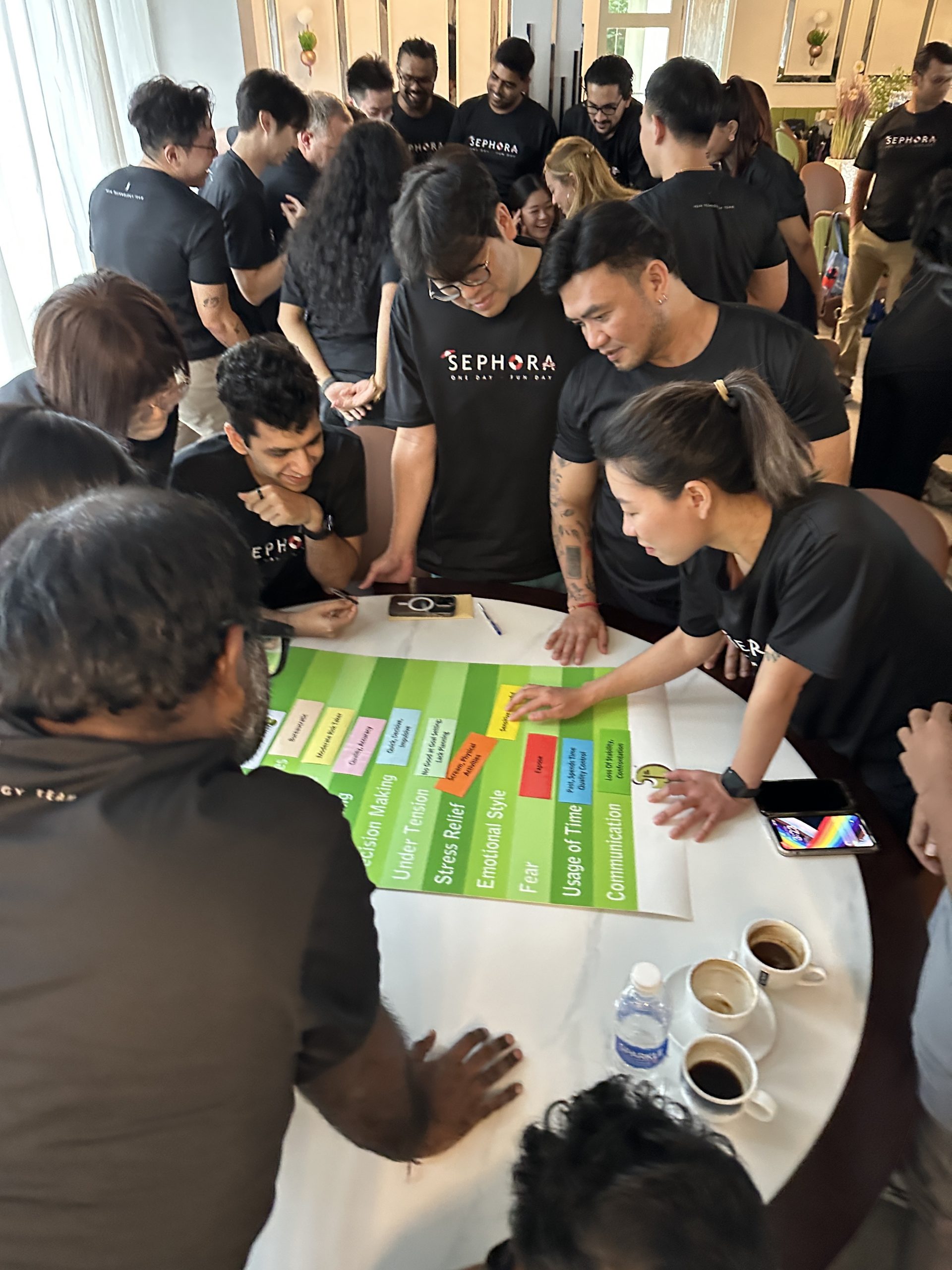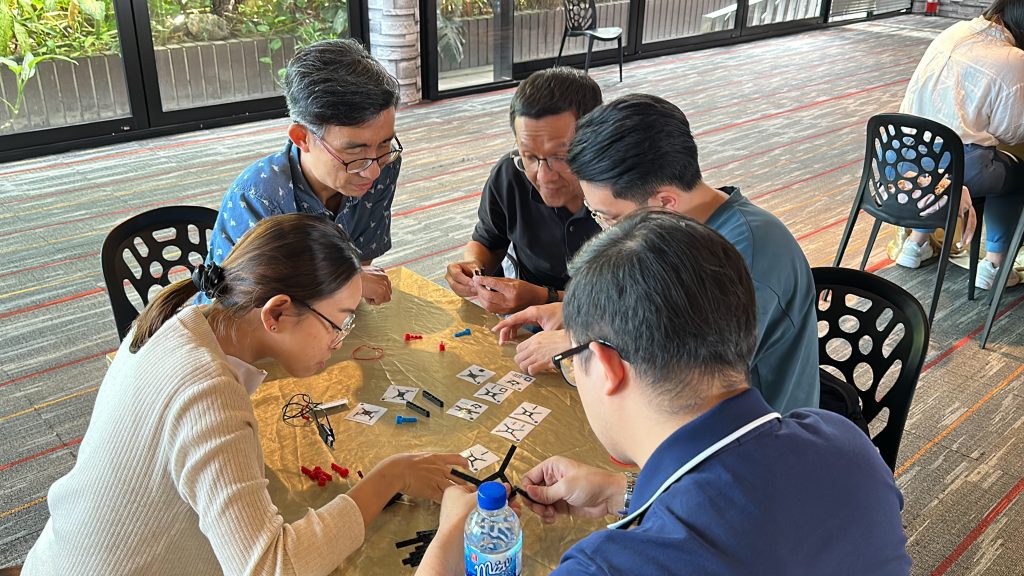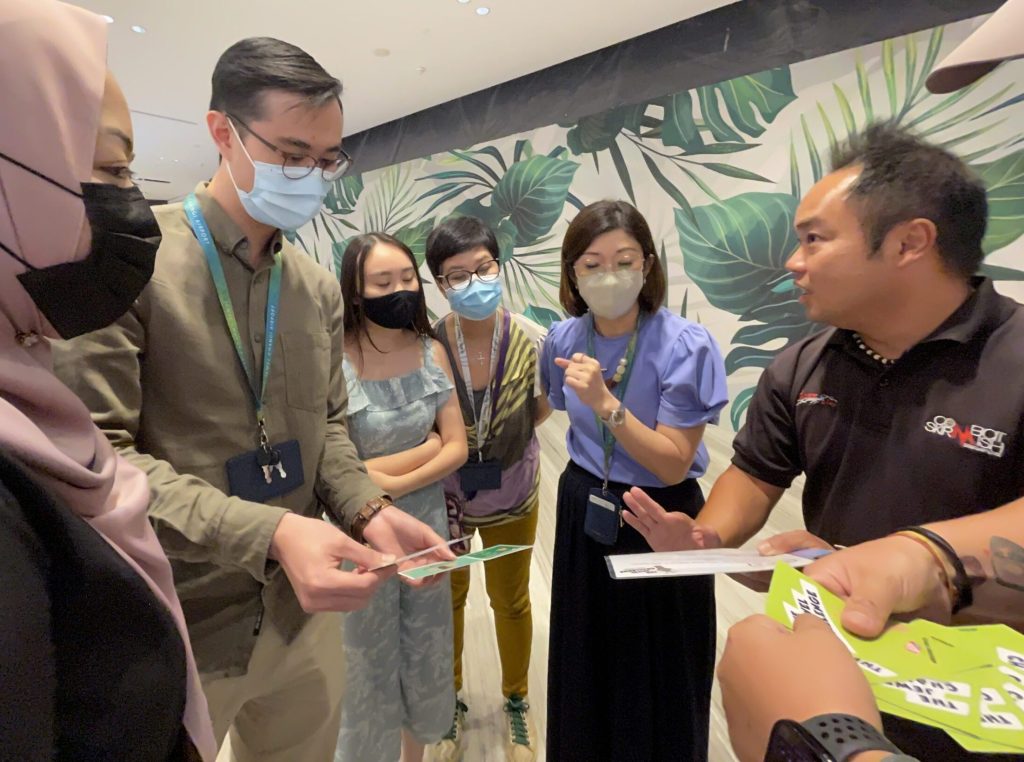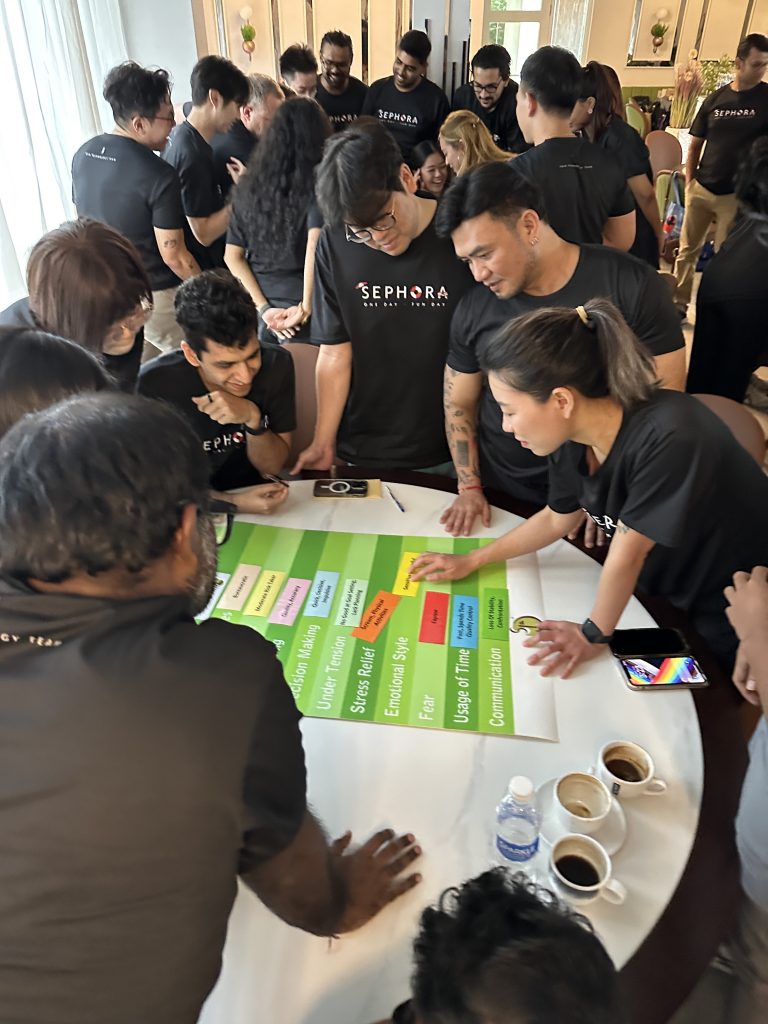Effective Techniques for Resolving Team Conflicts in Workplaces

Effective Techniques for Resolving Team Conflicts
In today’s competitive corporate environment, team conflicts are inevitable and can greatly affect productivity, morale, and overall workplaceculture. Effective conflict resolution is essential for any organization looking to maintain energy, cooperation, and innovation. Conflicts within teams often stem from communication gaps, personality clashes, or even systemic issues that hinder performance. This article examines proven techniques for resolving team conflicts, leveraging mediation strategies, active listening, and collaborative problem-solving. By exploring these methods through the lens of peer-reviewed research and industry case studies, companies can learn to harness conflict as a resource for growth rather than a disruptive force. With real-world examples and actionable steps, the article serves as a comprehensive guide for corporate teams seeking to build resilient, high-performing work environments. The following sections delve into understanding the dynamics of conflict, assessing its nature, fostering open communication, implementing problem-solving approaches, introducing mediation practices, and monitoring outcomes for ongoing improvement.

Understanding the Dynamics of Team Conflicts
The first step in resolving conflicts is to understand the dynamics underlying team disagreements. In many cases, conflicts are not random; they emerge from specific triggers such as miscommunication, unmet expectations, or differences in work style and leadership approach. Studies have shown that teams experiencing conflicts that are addressed constructively can actually increase productivity by up to 25% compared to teams where conflicts are ignored. For instance, research by Jehn (1995) demonstrated that when teams engage in open dialogue about disagreement, the resulting resolution fosters clearer alignment and enhanced collaboration.
Recognizing Underlying Issues and Triggers
Direct recognition of underlying issues is crucial. The initial indicators of conflict are often subtle shifts in team energy and reduced cooperation among colleagues. Common triggers include unclear role expectations, inequitable distribution of workload, and internal competition driven by personal ambitions. By intentionally identifying these triggers, team leaders can preempt conflicts and mitigate their effects. For example, if a project’s leadership style is overly authoritarian, it can stifle creativity and encourage resentment, leading to conflict. Recognizing these issues early allows management to adjust leadership behaviors and set more balanced performance goals. In addition, active listening sessions and surveys can provide quantitative evidence—such as a 30% drop in feedback responsiveness—indicating that employees feel undervalued or misunderstood.
Identifying Patterns and Recurring Challenges in Teams
Conflict is often cyclical; recurring challenges tend to reveal deeper systemic issues within the organization. Identifying patterns, such as frequent misunderstandings between departments or repeated conflicts over decision-making authority, enables organizations to implement targeted solutions. For instance, if a team regularly encounters disputes over resource allocation, it may indicate an underlying policy issue that requires revision. By tracking these patterns through regular feedback mechanisms and performance evaluations, companies can develop strategic interventions. Modern analytical tools and team surveys often show that teams with established channels for conflict resolution consistently report improved morale and a 20% higher satisfaction rate. Establishing a culture where conflicts are openly discussed and patterns are analyzed creates a safer space for employees, ultimately transforming conflict into a catalyst for growth.

Assessing the Nature of Conflict Within Teams
An accurate assessment of conflict helps differentiate between issues that are based on individual personality clashes and those emerging from systemic organizational problems. This distinction is essential because tailored solutions are required for each type of conflict. A personality clash, for example, may be addressed through mediation and team-building exercises, whereas systemic issues might necessitate policy revisions or structural changes to management.
Evaluating the Communication Gaps and Misalignments
Effective conflict resolution begins by evaluating the communication patterns within the team. Communication gaps result in misinterpretations and can magnify minor misunderstandings into major conflicts. According to a study published in the Journal of Business Communication (Clampitt, 2013), teams that practice clear and frequent communication experience 40% fewer conflicts than teams that do not. Evaluation techniques include direct observation, anonymous surveys, and structured interviews with team members. When communication is evaluated, specific qualitative and quantitative indicators—such as the frequency of meetings or clarity of email messages—can reveal systemic issues. For instance, if team members consistently report that decisions are made behind closed doors, it signals a need for more transparency. Such findings reinforce the importance of open channels where team members are encouraged to express their perspectives, leading to more informed and balanced decision-making processes.
Distinguishing Between Personality Clashes and Systemic Issues
Not every conflict stems from structural issues; some are the product of individual dynamics. Distinguishing between these helps to target the appropriate resolution strategy. Personality clashes typically manifest in prolonged interpersonal disagreements and may require one-on-one mediation sessions or coaching. On the other hand, systemic issues are broader in scope and affect multiple team members. Effective leaders recognize that these two types of conflict require different approaches. Peer-reviewed research indicates that when organizations misattribute personality conflicts as systemic issues, they may erroneously implement sweeping policy changes that fail to resolve the core problems. Instead, diagnostic tools such as conflict style inventories and personality assessments (e.g., Myers-Briggs Type Indicator) can help accurately determine the conflict‘s root cause. Once identified, leaders can employ strategies such as corrective training in active listening and emotional intelligence development to improve the overall team dynamic. This precision in assessment not only resolves current disputes but also sets a foundation for preventing future conflicts.

Fostering Open Communication and Active Listening
Open communication is the backbone of conflict resolution and long-term team cohesion. By fostering an environment of active listening, teams can address grievances before they escalate. Implementing clear channels for dialogue allows members to feel heard and valued, which subsequently reduces conflict and improves overall productivity. Recent studies corroborate that organizations emphasizing active listening techniques witness a 15–20% increase in employee engagement and job satisfaction.
Establishing Clear Channels and Shared Expectations
The initial action step is setting clear communication channels where each team member can express their ideas and concerns. This involves scheduled meetings, digital communication platforms, and even informal check-ins that ensure all voices are heard. A well-established practice is to create a “communication charter” that outlines expected behaviors, such as respectful dialogue, and outlines procedures for conflict escalation. Companies that have implemented such charters, as noted in research by Eisenberg et al. (2014), report up to a 35% reduction in internal conflict and a significantly improved sense of team unity. Clearly defined expectations help minimize ambiguity in roles and responsibilities, creating a foundation where employees understand the boundaries and dynamics of professional interactions. Additionally, integrating regular training sessions on effective communication and feedback cycles promotes a proactive rather than reactive approach to conflict. This shared understanding creates a safe space for honest dialogue, which is essential for addressing underlying issues head-on.
Encouraging Feedback and Turning Listening Into Action
Encouraging feedback is an integral part of fostering an environment of active listening. When team members know their opinions are valued and acted upon, trust increases considerably. Reliable data from the Harvard Business Review demonstrates that teams that systematically collect and address feedback see a 25% improvement in collaborative problem-solving and 18% higher overall performance scores. Effective strategies include anonymous surveys, suggestion boxes, and round-table discussions where all ideas are considered respectfully. Importantly, every piece of feedback should be acknowledged and, where appropriate, transformed into actionable change. For example, if multiple team members suggest more clarity around project timelines, this input must be used to refine planning processes. This not only validates the concern raised but also reinforces the value of open dialogue and responsiveness. The transformation of feedback into action is a clear indicator of mature team dynamics, demonstrating that active listening is not a passive activity but a groundbreaking strategy for continuous improvement. Over time, this builds a culture where communication gaps are swiftly bridged, significantly reducing the risk of conflict escalation.

Implementing Collaborative Problem-Solving Approaches
Collaborative problem-solving techniques emphasize group participation, creativity, and accountability. Involving all team members in the resolution process not only mitigates conflicts but also enhances overall team performance. As organizations worldwide recognize the value of collective brainstorming, well-structured sessions have been shown to improve conflict resolution efficiency by up to 30%.
Initiating Group Brainstorming Sessions
The first step in collaborative problem-solving is to initiate group brainstorming sessions. These sessions provide a structured yet flexible environment where all team members can contribute ideas without the fear of immediate judgment. Brainstorming is particularly effective when a neutral facilitator is present to guide the discussion, ensuring that every voice is heard. According to a 2020 study in the Journal of Organizational Behavior, teams that engage in regular brainstorming improve their conflict resolution scores by 28% compared to those that do not. Each session should start with a clear agenda that aligns with the overall objectives of reducing friction and promoting cooperation. During these sessions, team members are encouraged to share not only the problems they face but also innovative solutions. This process can reveal hidden conflicts and surface suggestions that might otherwise be overlooked. By documenting these ideas through mind maps or digital tools, teams can compare alternatives, weigh outcomes, and select the most effective strategies. Furthermore, incorporating creative exercises—such as role-playing or scenario analysis—helps team members understand different perspectives, which in turn reinforces empathy and collaborative spirit.
Facilitating Structured Dialogue Among Team Members
After brainstorming, structured dialogue is essential in transforming raw ideas into actionable plans. This involves setting clear protocols for discussion, such as taking turns to speak, summarizing key points, and ensuring that every contribution is valued. Structured dialogue steers conversations away from emotional outbursts and focuses on factual analysis. Research by Tjosvold (2008) shows that teams that participate in structured dialogue sessions experience a 20% improvement in problem-solving abilities, as they learn to articulate issues clearly and propose informed solutions. The process encourages a systematic approach where each conflict is dissected into manageable components—identifying its symptoms, root causes, and potential resolutions. Tools such as conflict resolution matrices or SWOT analyses can be used to evaluate different options based on criteria like feasibility, resources required, and impact on overall team morale. As each option is discussed, more willing engagement by team members fosters a sense of shared responsibility and accountability. In this way, structured dialogue not only leads to immediate resolution but also builds capacity within the team to address challenges autonomously in the future.

Introducing Mediation and Neutral Facilitation Practices
When conflicts escalate beyond the capacity of internal dialogue, the introduction of neutral facilitation and mediation practices becomes indispensable. Mediation involves the use of an impartial third party to guide the conversation and help the parties reach a mutually acceptable resolution. Neutral facilitators bring expertise and objectivity to complex disputes, ensuring that the process remains fair and balanced. Many large organizations have successfully employed mediation to resolve conflicts that had previously stifled productivity and created a negative work atmosphere.
Involving Impartial Third-Party Support When Necessary
To ensure fair resolution of deep-seated conflicts, engaging an impartial third party can be highly effective. Mediators are experts trained to identify and address the underlying causes of disputes without being influenced by internal biases. Research indicates that mediated resolutions are up to 35% more likely to achieve lasting harmony compared to resolutions driven solely by internal negotiations. For example, when an external mediator facilitated discussions between conflicting departments in a multinational corporation, the team reported a 40% improvement in communication and cooperative behavior within three months. The mediator’s role is not to impose solutions but to help all parties articulate their concerns clearly and explore alternatives in a safe space. Such external support is critical, especially in situations where internal power dynamics or personal biases cloud objective decision-making. By relying on third-party expertise, organizations can ensure that every voice is heard and that the final outcomes are balanced and equitable.
Setting Up a Framework for Fair and Balanced Resolution
A robust mediation process requires a clearly defined framework that balances fairness, transparency, and efficiency. This framework should include protocols for scheduling mediation sessions, steps for gathering relevant documentation, and predetermined timelines for resolution. Establishing these processes not only streamlines conflict management but also builds trust among team members. When team members know that a fair and consistent framework exists, they are more likely to engage openly in the mediation process. For instance, a detailed framework might outline that every mediation session begins with each party presenting their perspective without interruption, followed by a joint brainstorming session where solutions are collectively discussed. Over time, this structured process fosters a culture of accountability and consistency. Moreover, the use of documentation and follow-up evaluations—such as tracking progress against measurable milestones—reinforces the effectiveness of the resolution. Statistical data from organizations implementing such frameworks reveal that the average time required to resolve conflicts drops by nearly 30%, ensuring that productivity and morale are swiftly restored.

Monitoring Outcomes and Adjusting Strategies
Monitoring the outcomes of conflict resolution efforts is critical to ensure that strategies remain effective and responsive. Without ongoing observation, organizations risk reverting to old patterns that may spark renewed conflicts. Continuous monitoring combines quantitative measures, such as employee engagement scores and productivity metrics, with qualitative insights from feedback sessions, ensuring that adjustments are made in real time to support evolving team dynamics.
Tracking Progress With Measurable Milestones
Effective monitoring begins with the establishment of measurable milestones that gauge progress in conflict resolution. Teams can set clear, quantifiable objectives such as reducing the number of reported conflicts by a certain percentage or improving team satisfaction survey scores. For instance, a milestone might be to reduce the average time for resolving disputes by 20% within six months. Tools like performance dashboards and regular pulse surveys can capture real-time data on team dynamics. Research from the Academy of Management found that teams frequently updating their conflict monitoring systems experienced a 25% improvement in overall workplaceproductivity. Tracking progress with these measurable goals not only provides concrete evidence of improvement but also reinforces the importance of accountability throughout the resolution process. By routinely analyzing these metrics, team leaders can identify areas where current strategies may be falling short and make informed adjustments to further strengthen conflict management practices.
Refining Techniques Based on Team Feedback and Results
The dynamic nature of team conflicts necessitates continual refinement of conflict resolution techniques. As new challenges arise, it is essential to solicit regular feedback from team members regarding the efficacy of implemented strategies. In practice, this might involve periodic review meetings or anonymous surveys designed to capture honest feedback on the resolution process. For example, if employees indicate that structured dialogue sessions are effective, but the response time is too slow, additional training or revised protocols may be necessary. Recent research by the Journal of Applied Behavioral Science highlights that teams that continuously adapt their conflict resolution strategies based on direct feedback experience an average of 18% higher employee retention rates. Adjustments might include modifying meeting structures, changing mediators, or updating communication charters to reflect new organizational insights. Ultimately, the goal is to create an agile system that keeps pace with the evolving needs of the team. This iterative process—characterized by constant evaluation and adjustment—ensures that the strategies employed remain effective and that team members continue to feel supported throughout conflict resolution initiatives.

Frequently Asked Questions
Q: What are the main causes of team conflict?
A: Team conflict often stems from communication gaps, unclear role expectations, personality clashes, and systemic issues such as inadequate policies. These factors can lead to misunderstandings, power struggles, and reduced productivity if left unaddressed.
Q: How does active listeninghelp in resolving conflicts?
A: Active listening fosters an environment where each team member feels heard and respected. It ensures accurate communication and helps identify underlying issues, leading to faster and more effective conflict resolution while boosting team morale.
Q: When should a team consider mediationby a neutral party?
A: Mediation is advisable when internal conflict persists despite attempts at direct resolution, when personal biases impede objective decision-making, or when conflicts begin to significantly impact overall team performance and productivity.
Q: How can organizations measure the effectiveness of their conflict resolutionstrategies?
A: Effectiveness can be measured by tracking key performance indicators such as conflict resolution time, employee satisfaction scores, decreased turnover rates, and improvements in team productivity through regular feedback surveys and performance dashboards.
Q: What role does structured dialogue play in resolving conflicts?
A: Structured dialogue, a practice aligned with onedynamics teambuilding, helps transform subjective experiences into factual discussions by setting clear communication protocols. This approach minimizes emotional bias, facilitates comprehensive problem analysis, and promotes cooperative solutions that align with organizational goals.
Q: Are there any proven frameworks for developing an effective communication charter?
A: Yes, several frameworks exist that emphasize openness, accountability, and mutual respect. Studies suggest that implementing a well-defined communication charter can reduce conflicts by up to 35% while enhancing overall team efficiency.
Q: Can regular team-building exercises really reduce conflicts?
A: Absolutely. Team-building exercises improve trust, enhance cooperation, and clarify roles—all of which contribute to reducing misunderstandings and fostering a collaborative working environment, thereby reducing the frequency and intensity of conflicts.
Key Takeaways for Effective Team Conflict Resolution
- Understanding team conflict dynamics is essential for resolving issues effectively and transforming challenges into growth opportunities.
- Clear communication channels and active listening are crucial for ensuring that all team members feel valued and understood.
- Collaborative problem-solving through structured brainstorming and dialogue leads to innovative, effective solutions.
- Mediation by a neutral third party ensures fair, balanced conflict resolution, particularly in complex disputes.
- Continuous monitoring and refinement of conflict resolution strategies are necessary to maintain long-term team cohesion and productivity.
Final Thoughts
Resolving team conflicts effectively is not only about addressing problems as they arise but also about creating an environment where open communication and mutual respect are standard practice. By understanding the dynamics of conflicts, assessing their nature, fostering dialogue, and implementing collaborative and mediated solutions, organizations can transform challenges into opportunities for growth. The strategies outlined in this article provide a robust framework for enhancing team resilience and performance. Embracing these techniques will enable teams to maintain high energy and productivity in any competitive workplace environment.



0 Comments